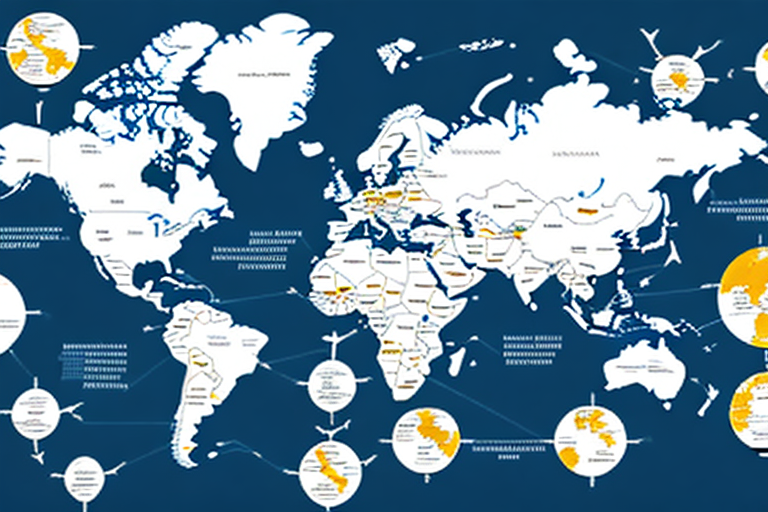Introduction to International Ecommerce Selling
Expanding your ecommerce business internationally can unlock new revenue streams and a broader customer base. However, it also introduces complexities such as varying cultural norms, legal regulations, and logistical challenges. Success in international ecommerce requires a strategic approach that addresses these multifaceted aspects.
Understanding the Global Market and Selecting Products
Market Research and Analysis
Conducting thorough market research is essential to identify demand, understand competition, and determine pricing strategies in different regions. According to a Statista report, global ecommerce sales are expected to reach $6.54 trillion by 2023, highlighting the vast opportunities available.
Product Localization
Adapting your products to meet the specific needs and preferences of each target market increases the likelihood of success. This may involve modifying product features, packaging, or offering region-specific variations.
Navigating Payment, Currency, Taxes, and Legal Requirements
Payment Gateways and Currency Conversion
Selecting the right payment gateways that support multiple currencies is crucial. Tools like PayPal and Stripe facilitate international transactions, but be mindful of currency conversion fees that can impact your profit margins.
Taxation and Legal Compliance
Understanding the tax obligations and legal requirements in each target country is vital. Resources such as the OECD tax guidelines provide comprehensive information on international taxation policies that ecommerce businesses must adhere to.
Setting Up Your Ecommerce Store and Managing Logistics
Website Localization
Localizing your ecommerce website involves translating content into the local language, adapting to local cultural norms, and ensuring the website is optimized for local search engines. Tools like Wix and Shopify offer features that support website localization.
Shipping and Fulfillment Strategies
Efficient shipping and fulfillment are critical for maintaining customer satisfaction. Partnering with reliable logistics providers and utilizing fulfillment services like FedEx or UPS can streamline your international shipping processes.
Customs and Import Regulations
Each country has its own import regulations and customs procedures. Collaborating with customs brokers and staying informed about international trade agreements can help mitigate delays and avoid legal issues.
Building Trust and Communication with International Customers
Customer Service Excellence
Providing exceptional customer service tailored to local expectations builds trust and fosters loyalty. Offering multilingual support and clear communication channels are essential components of a successful international customer service strategy.
Transparent Business Practices
Transparency in business operations, including clear return policies and honest product descriptions, enhances credibility and customer trust across diverse markets.
Marketing Strategies and Cultural Considerations
Localized Marketing Campaigns
Developing marketing campaigns that resonate with local cultures increases engagement and conversion rates. Utilizing local influencers and culturally relevant advertising can significantly impact your international marketing efforts.
Social Media and Digital Marketing
Leveraging popular social media platforms specific to each region, such as Weibo in China or Facebook in the United States, allows you to reach and interact with a broader audience effectively.
Customer Service and Data-Driven Optimization
Utilizing Analytics for Decision Making
Implementing analytics tools like Google Analytics provides insights into customer behavior, enabling you to optimize your sales strategies based on data-driven decisions.
Continuous Improvement
Regularly analyzing performance metrics and customer feedback helps in refining products and services to better meet the evolving needs of international markets.
Overcoming Common International Ecommerce Challenges
Handling Returns and Refunds
Establishing a clear and efficient returns policy that complies with local regulations is essential for customer satisfaction and trust.
Managing Inventory Across Borders
Effective inventory management systems ensure that products are available where needed, reducing the risk of stockouts and overstock situations in different regions.
Adapting to Market Changes
Staying agile and ready to adapt to market shifts, such as changes in consumer preferences or economic conditions, is crucial for maintaining competitiveness in international markets.
Conclusion: Key Takeaways for Succeeding in International Ecommerce
Succeeding in international ecommerce requires a comprehensive approach that encompasses market understanding, strategic localization, efficient logistics, and robust customer service. By leveraging data-driven strategies and maintaining flexibility to adapt to diverse market conditions, businesses can effectively navigate the complexities of global expansion and achieve sustained growth in the international marketplace.






















